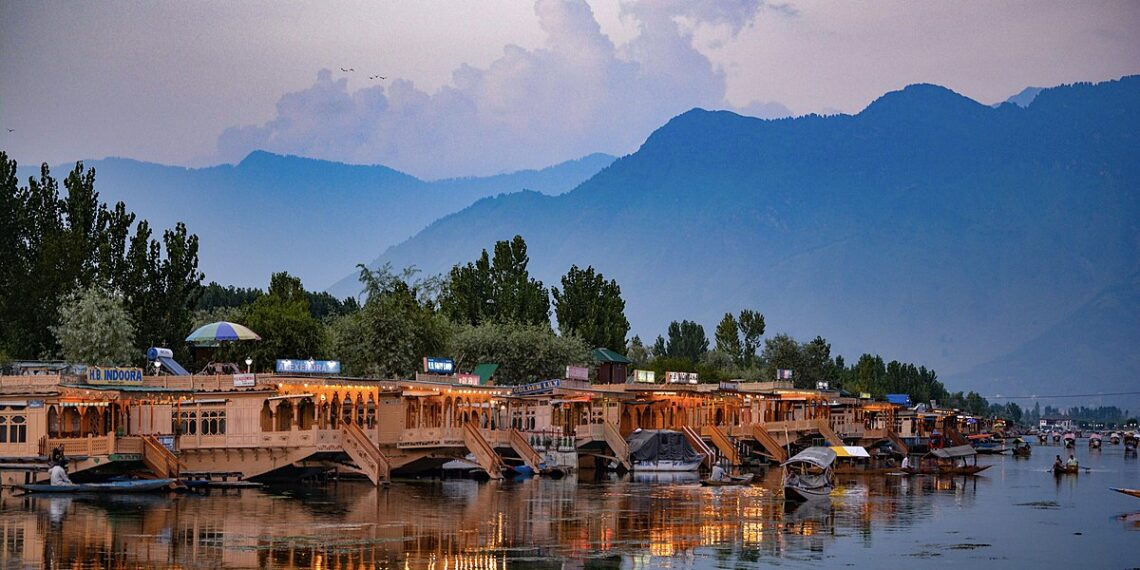Kashmir, often referred to as “Paradise on Earth,” has long been a muse for poets and writers. Its snow-capped mountains, lush valleys, tranquil lakes, and vibrant culture have inspired generations of literary minds. But beyond the picturesque landscapes, Kashmir’s literature captures the soul of its people—their joys, sorrows, resilience, and deep connection to their land. Through the words of its poets and writers, Kashmir reveals itself as not just a physical space but an emotional and spiritual experience.
One of the earliest literary voices from Kashmir is that of Lal Ded Lalleshwari, a 14th-century mystic and poetess whose “Vakhs” short, mystical poems continue to resonate across generations. Her verses, steeped in spiritual philosophy, reflect a profound connection with nature and a quest for inner truth:
Lal Ded’s poetry transcended religious boundaries, influencing both Hindu and Muslim traditions in Kashmir. Her words, simple yet profound, reflect the timeless spirit of Sufism that has shaped much of the region’s cultural and literary ethos. Following in this mystical tradition was Sheikh Noor-ud-din Noorani popularly known as Nund Rishi, regarded as the founder of the Rishi order of Kashmiri saints. His poetry, written in the local language, emphasized compassion, simplicity, and harmony with nature:
This reverence for nature and the deep philosophical undercurrents in their work highlight Kashmir’s spiritual depth long before the political turbulence of later years.
In the 20th century, Kashmir’s natural beauty and complex socio-political landscape became a backdrop for both romantic and tragic narratives. Agha Shahid Ali, perhaps the most internationally recognized Kashmiri poet, brought the region’s grief and beauty to the global stage. His collection, “The Country Without a Post Office,” is a heart-wrenching meditation on loss, exile, and longing amidst the backdrop of conflict:
Agha Shahid Ali’s poetry intertwines the personal with the political, painting Kashmir as both a paradise lost and a home yearned for. His use of the traditional Ghazal form, fused with modern themes of displacement and identity, reflects the duality of Kashmir’s beauty and its pain.
Similarly, Salman Rushdie, in his seminal work “Midnight’s Children,” refers to Kashmir as a place of dreamlike beauty, symbolizing both hope and unattainable desires. Though not exclusively a Kashmiri writer, Rushdie’s portrayal of Kashmir evokes its mythic status in the Indian imagination.
The latter half of the 20th century saw a shift in Kashmiri literature, with writers turning their gaze towards the political conflict that has plagued the region since the late 1980s. Basharat Peer’s memoir, “Curfewed Night,” offers a journalistic yet deeply personal account of growing up during the insurgency. His narrative captures the human cost of violence, revealing stories often left untold by mainstream media:
Similarly, contemporary poets like Farah Bashir and Sumaya Rafiq write about the daily realities of life in conflict, focusing on themes of loss, trauma, and survival. Their works are marked by a quiet, enduring resilience, reflecting how the people of Kashmir navigate their fractured world
Kashmir’s literary heritage is as diverse and layered as its history. From the mystical verses of Lal Ded and Nund Rishi to the poignant poetry of Agha Shahid Ali and the raw narratives of Basharat Peer, Kashmiri literature captures the essence of a land caught between paradise and conflict. Through the eyes of its poets and writers, Kashmir is revealed not just as a physical space of extraordinary beauty but as a repository of human emotion, spiritual depth, and cultural resilience. In their words, we see a valley that bleeds and blooms in equal measure a place where the echoes of heartbreak coexist with the whispers of hope. Ultimately, the literature of Kashmir serves as both a testament to its people’s endurance and an invitation to the world to see beyond the headlines, into the soul of the valley itself.


